NASA recently celebrated 15 years of continuous habitation on the International Space Station. During this time, the ISS and other satellites brought us an inestimable trove of information, pushing forth our understanding of the planet by a wide margin. Let’s have a look at some of these accomplishments.
Detecting the ozone hole
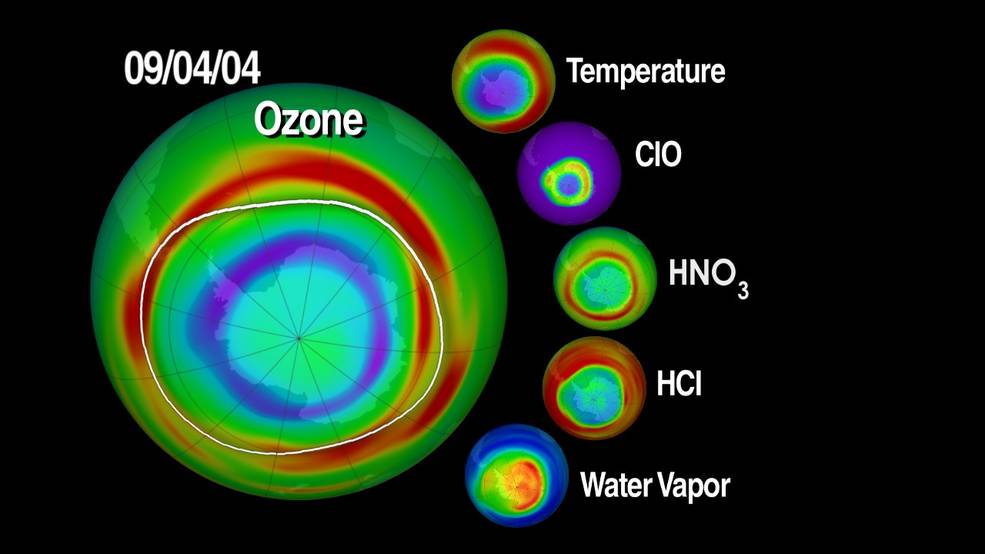
Monitoring the ozone hole allowed us to understand just how much damage we are doing and start taking protective measures. The Microwave Limb Sounder was the first to measure, from space, all the gases that are part of the ozone depletion cycle, highlighting ozone depletion as it happened. After that…
Fixing the ozone layer

Credits: NASA Goddard’s Scientific Visualization Studio
The 1987 Montreal Protocol banned the use of ozone-depleting chemicals and the entire world joined efforts to tackle a major threat. The ozone layer, high in the atmosphere, acts like sunscreen for Earth, protecting every living thing on the surface from the sun’s harmful radiation.
The collapse of an ice shelf
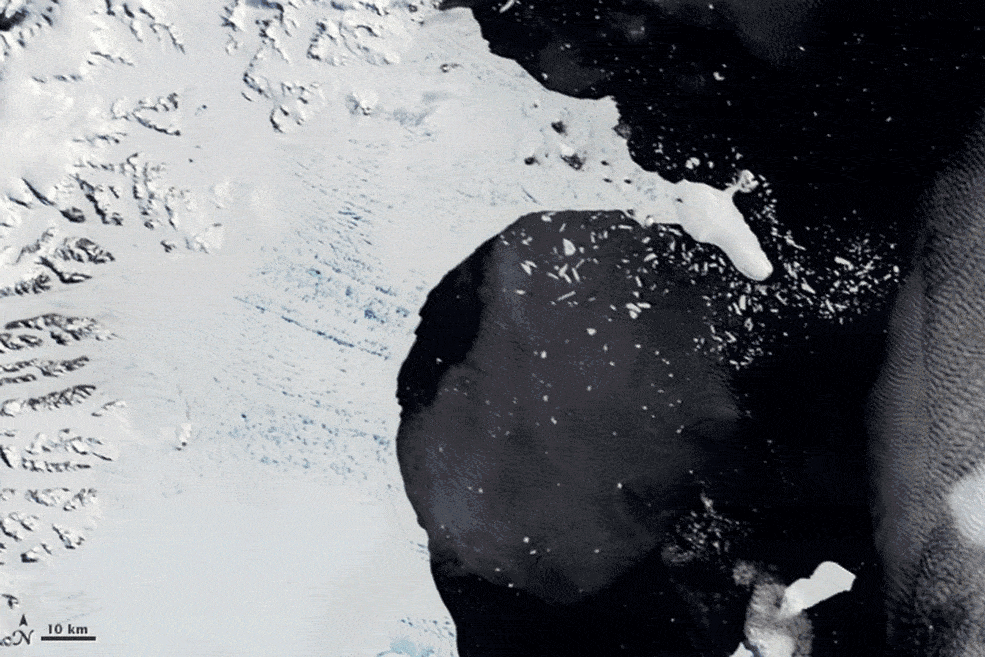
If a glacier collapses and no one sees it, does it actually collapse? Yes, because NASA sees it. In January 2002, the surface of the Larsen B Ice Shelf – a mass of ice measuring 1,250 square miles, larger than New Hampshire and Vermont combined became quickly covered by ponds, and in mid February, it started collapsing. The collapse wasn’t complete until March 7.
Understanding vegetation cycles

At the start of the 21st century, we already had a pretty good idea about the vegetation cycles, but satellite views allowed us to measure carbon absorption due to vegetation; here, the darker green shows higher rates of carbon absorption, somewhat mimicking the seasonal growth and decline of green vegetation across the planet.
Breathing cleaner air in the US

It may surprise you, but the air quality in the US has improved in recent years. Mostly due to stricter regulations for cars and industries, US citizens are breathing cleaner air. Here, NASA monitored one pollutant – nitrogen dioxide – using the OMI instrument on the Aura satellite. The timeframe is 2005-2011.
A burning planet
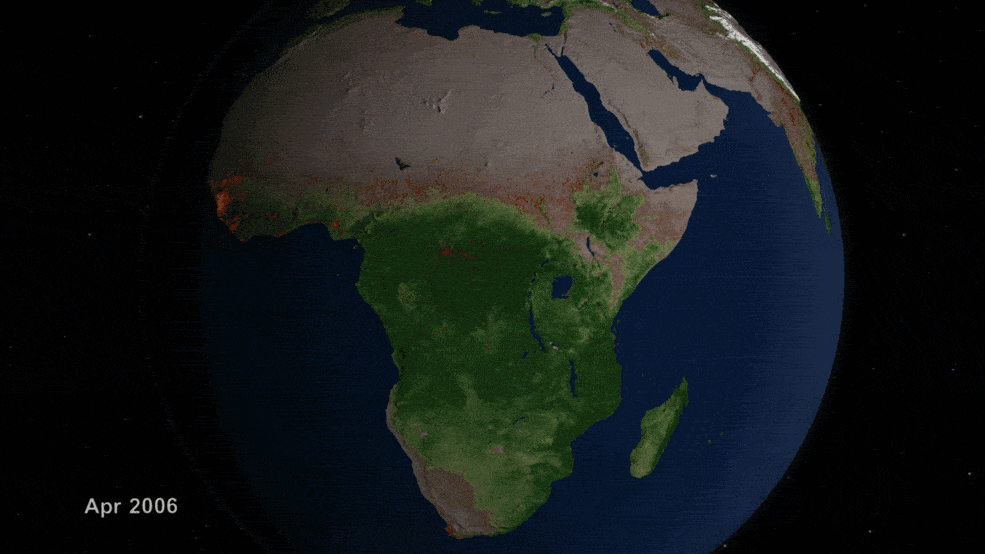
Sadly, not all news from outer space is that good. Each year, a whopping one third of the land surface is touched by at least one fire. Since they started recording, NASA’s satellites have recorded over 40 million actively burning fires, revolutionizing scientists’ understanding of where fires occur and how they affect ecosystems, as well as the carbon dioxide released in the atmosphere. The real-time fire map has proven an extraordinary resource.
Hey, and if that is not enough, NASA has another tool:
Smoke Plumes
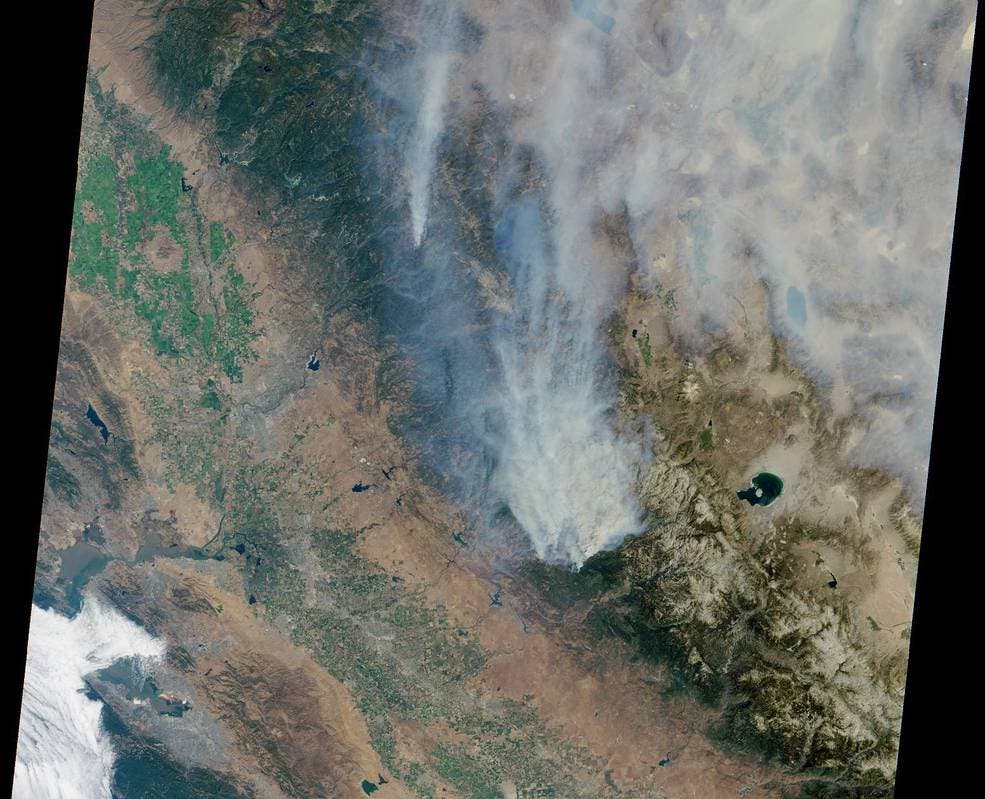
Credits: NASA/Goddard/Langley/JPL, MISR Team
Their sensors can detect not only the heat given up by wildfires, but also count the number of active fires around the globe at any given time by studying smoke plumes.
Arctic heating

Credits: NASA Goddard’s Scientific Visualization Studio
The Arctic is possibly the most important area in terms of climate – because it is covered in snow, it reflects most of the solar energy. If the ice melts, it will become darker, and absorb even more heat from the sun, and melt even more, creating an anti-snowball effect. Warming is also much more pronounced in the Arctic.
Sea Ice Shrinks
Along the years, several satellites have monitored the extent of Arctic ice, but the Aqua satellite was the first one that us such high-resolution data that we could see how something like the Arctic ice cap – a floating layer of sea ice larger than the continental U.S. – moves and changes on a daily basis, and shrinks and grows seasonally.
Carbon dioxide and wanes

Credits: NASA Goddard’s Scientific Visualization Studio
The AIRS – Atmospheric Infrared Sounder – instrument on Aqua measured carbon dioxide a few thousand feet above the surface. Most notably, this visualization allowed us to see just how the greenhouse gases is distributed in the planet’s atmosphere during the seasons.
Clouds and aerosols
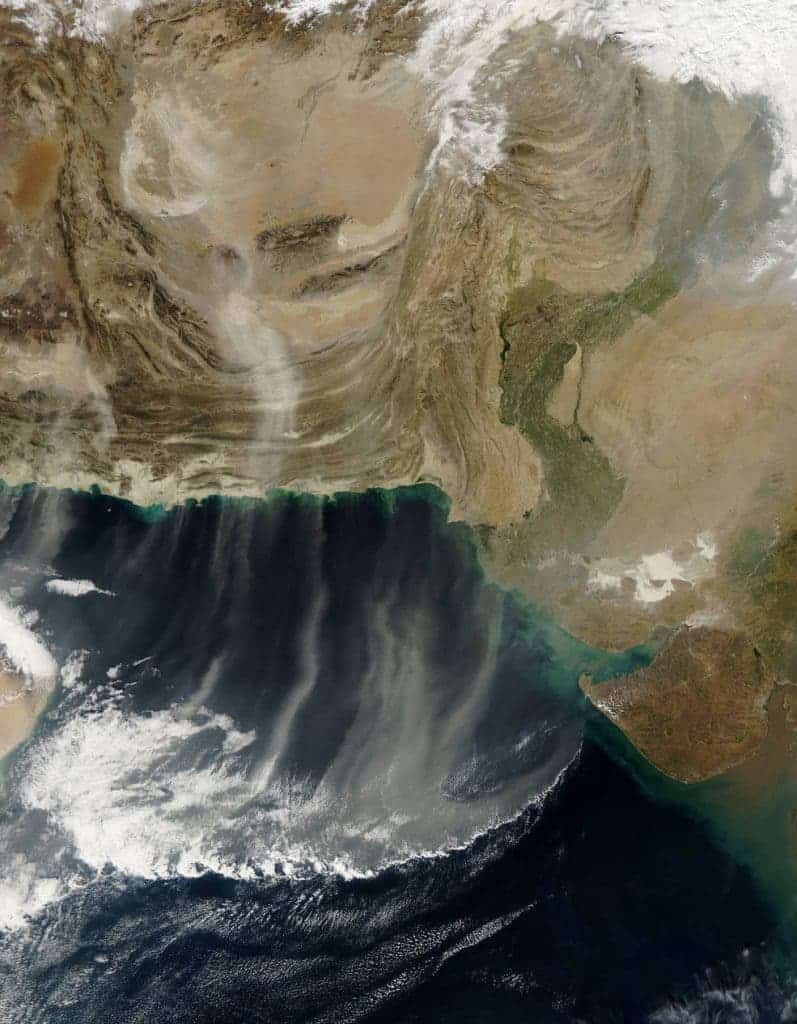
Credits: NASA/Goddard/MODIS Land Rapid Response
Clouds and aerosols are two of the still-mysterious variables when it comes to the future of climate change, creating more uncertainty. Some clouds reflect the sun’s rays, while others capture the heat, and the same can be said about aerosols. Aerosols can also seed clouds, further complicating the picture.
Topo maps
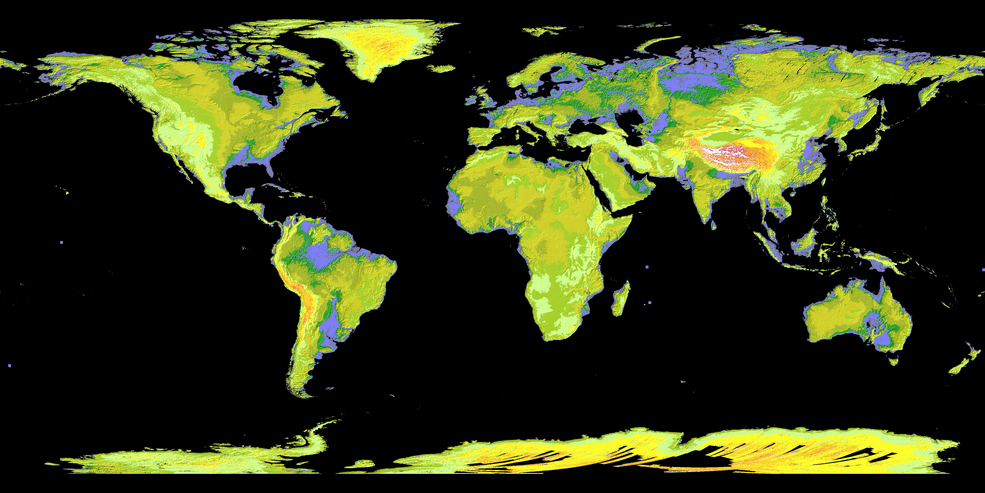
Credits: NASA/JPL/METI, ASTER Team
Explorers have went to all corners of the world, charting inhospitable areas and tropical paradises just as well, but now, we can create topographic maps from outer space. The Global Digital Elevation Models produced by the Advanced Spaceborne Thermal Emission and Reflection Radiometer, or ASTER, instrument aboard Terra collects pairs of slightly offset images of Earth’s surface. The image pairs work like our eyes – the slightly offset images give information about depth and allow scientists to visualize the Earth’s terrain in 3D. The image above was stitched from over 1.3 million scenes.
The ocean and tiny plankton
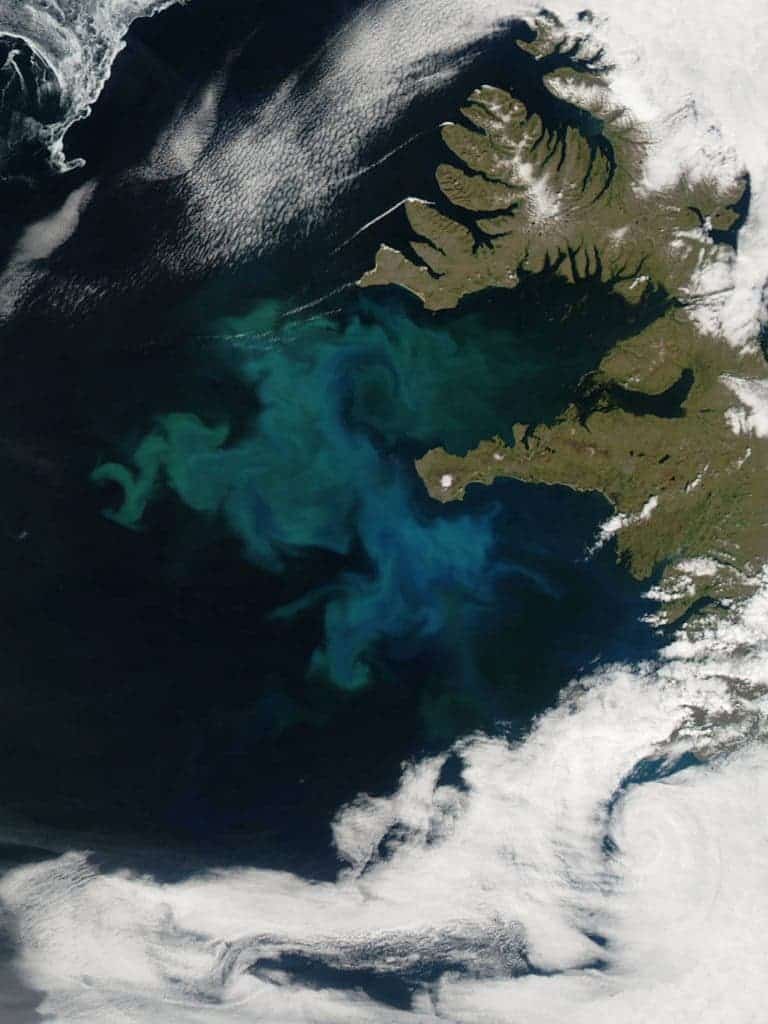
Credits: NASA’s Earth Observatory
Plankton may be tiny, but when they gather together… they reach incredible sizes. Plankton blooms can cover hundreds of miles. Globally, phytoplankton blooms account for about half of the net photosynthesis on Earth and are major players in taking carbon out of the atmosphere and transferring it to the ocean.
Mapping carbon monoxide

Credits: NASA’s Earth Observatory
Carbon monoxide is a colorless, odorless pollutant, emerging from everything from forest fires to vehicle tailpipes… so how do you map it? An instrument on Terra called Measurements of Pollutants in the Troposphere, or MOPITT, was the first dedicated to tracking sources of carbon monoxide and following the gas across the globe. The good news is that while the carbon dioxide in the atmosphere has increase, carbon monoxide has actually decreased.
A blue marble

Credits: Image Credit: NASA’s Earth Observatory
The Blue Marble image has become one of the most iconic ones in the modern history of mankind. In 2002, NASA scientists and visualizers stitched together strips of brand new data, in natural color, collected over four months from the Moderate Resolution Imaging Spectroradiometer, or MODIS, instrument aboard Terra. They added a layer of clouds to create this composite Blue Marble, for everyone to admire.



